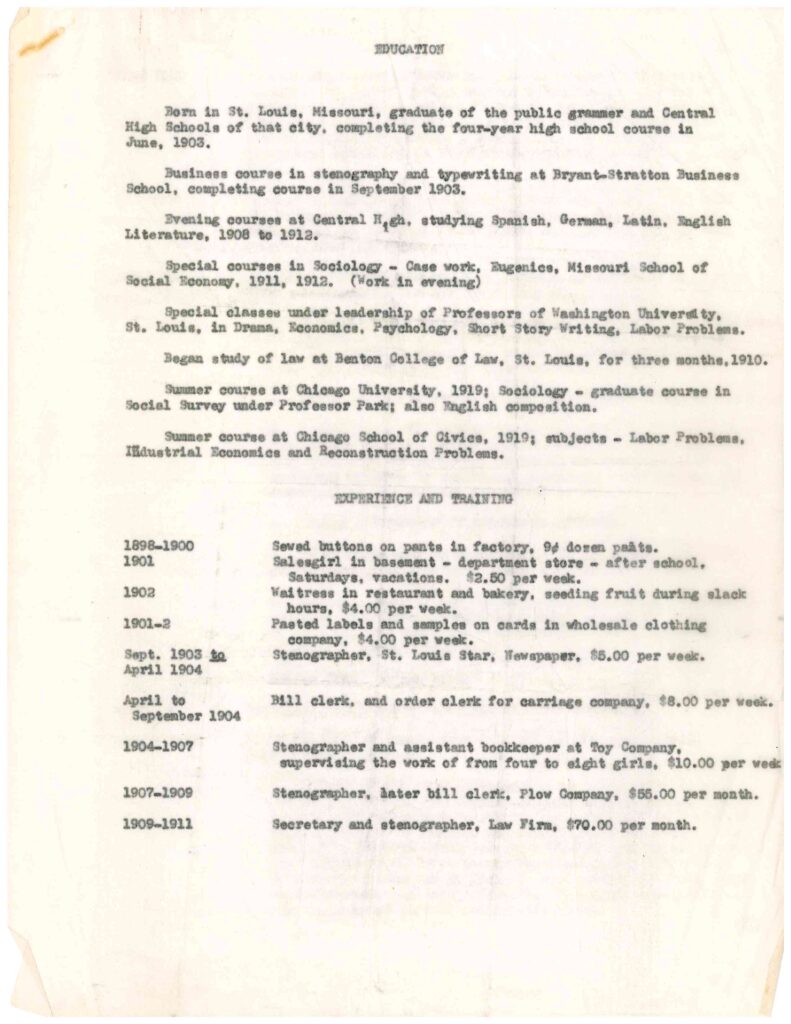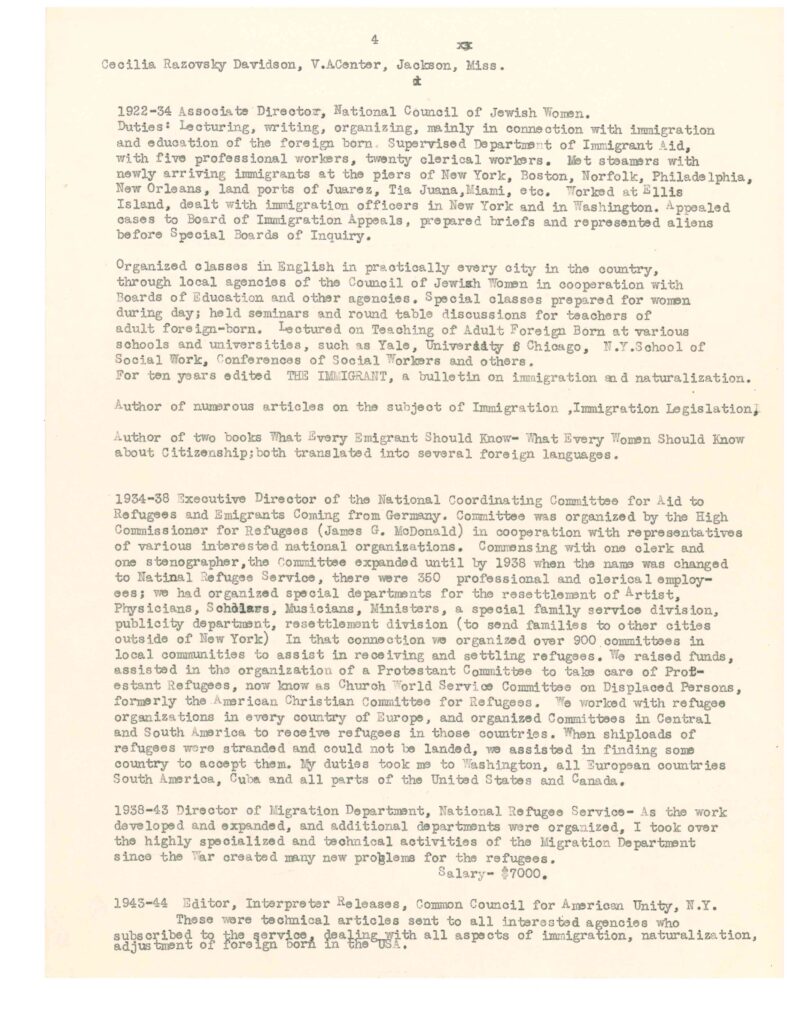Cecilia Razovsky is known for her invaluable contributions to refugee relief and advocacy work, as well as her service in the field of immigration. During her decades long career in the 20th century, Razovsky worked with several different organizations- including the National Council of Jewish Women, the National Refugee Service, the German Jewish Children’s Aid, the American Jewish Joint Distribution Committee, the United Nations Relief and Rehabilitation Agency, the United Service for New Americans, the Hebrew Immigrant Aid Society Service, and the Citizen’s Committee on Displaced Persons- to facilitate the resettlement of Jewish people from Europe and provide support to ensure their successful integration into their new communities. Considering the limitations on women’s professional lives in the 20th century, it is astonishing how much Razovsky accomplished during her distinguished career.
Razovsky married her husband, Dr. Morris Davidson, in 1927, only three years before significant data was released detailing women’s roles in the workplace. According to the 1930 census, 22% of females over the age of ten were in the workforce, and of the number of women working, only 11% continued after they got married.1 Razovsky, of course, was part of the 11%. During this period, women often worked in jobs that often did not require them to be formally educated. Since most women stopped working once they were married, the average career for a woman was drastically shorter than that of a man. This meant that they did not reach the top echelons of their respective careers or make as much money as men.2 Most commonly, women were nurses, teachers, typists, and secretaries. In 1939, the average salary a white woman made was $676 annually, compared to $1,112 for white men.3 However, in 1939, Cecilia Razovsky was making $7,000 working as the Director of the Migration Department at the National Refugee Service.
Historians are able to ascertain Razovsky’s salaries throughout her career as they were included on several resumes and biographical documents. While the earliest historical record of a resume dates to Leonardo da Vinci in 1482, its widespread use began to increase in popularity in the early 20th century.4 Razovsky participated in this trend, also adding salary information. Simultaneously, during this period, textbooks were published with information on how to locate jobs, act during an interview, and write a resume.5 Multiple waves of these textbooks were published with sample resumes, a few of which included salary information, although none of them matched the layout seen in Razovsky’s version of her resume.6 Some included personal information- such as religion, marital status, height, and weight- while others simply use sentence fragments to list the applicant’s skill set or utilize a prose-like tone.7 The top section of Razovsky’s resume highlights educational information, leading to her professional experience listed chronologically, with salary information, making her resume distinct. It is difficult to understand the possible motives behind Razovsky’s inclusion of her salary on her resume, and her resume’s format, without additional evidence. It is possible that Razovsky intentionally documented her career; perhaps she was aware that her experiences were unlike many others of the time. Or perhaps, she may have had the foresight to realize that it would be helpful to historians in the future.


_____________________________________
- U.S. Census Bureau. Enumeration and Classification of Occupations. By Author/s; U.S. Census Bureau. Marital Condition of Occupied Women. By Author/s. ↩︎
- Yellen, Janet L. “The history of women’s work and wages and how it has created success for us all.” Brookings. Last modified May 2020. Accessed July 2, 2025. ↩︎
- Bureau of Labor Statistics. Statistical Abstract of the United States. By Author/
s. 1955. ↩︎ - Howden, D. (2023, September 1). Die hard: The troubled history of the resume. Retrieved July 21, 2025, from https://resources.workable.com/stories-and-insights/history-of-the-resume ↩︎
- Popken, Randall. “The Pedagogical Dissemination of a Genre: The Resume in American Business Discourse Textbooks, 1914-1939.” JAC 19, no. 1 (1999): 91–116. http://www.jstor.org/stable/20866224. ↩︎
- Ibid. ↩︎
- Ibid. ↩︎

